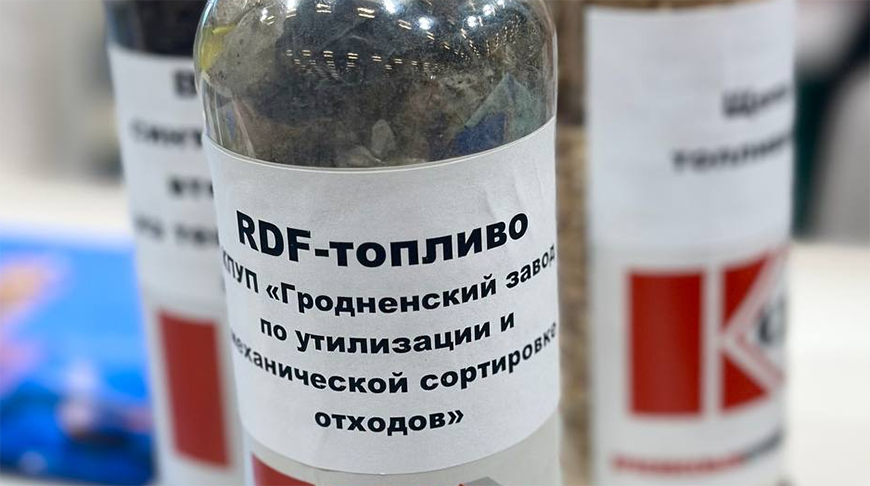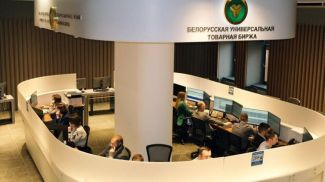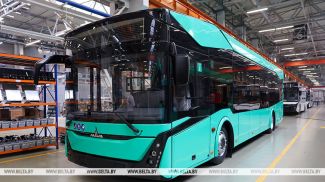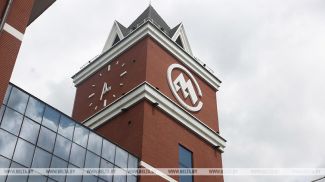
MINSK, 24 September (BelTA) – The holding company Belarusian Cement Company continues putting efforts into increasing the usage of refuse-derived fuel (RDF) in cement production, representatives of the managing company of the holding company Belarusian Cement Company told BelTA.
The ecological agenda occupies an important place in the Republic of Belarus. One of the strategic tasks of the civil engineering industry at present is to make competitive products with minimal environmental impact. The head of state paid close attention to the matter during a government conference dedicated to waste management and the use of secondary material resources.
The use of RDF fuel in cement production accomplishes two key tasks at the national level simultaneously. First of all, the conversion of solid municipal waste into fuel allows decreasing the environmental impact by reducing the amount of waste that needs burying and by reducing the number of landfills. Secondly, the use of proprietary RDF fuel decreases dependence on imported energy resources.
The government’s decision to finance the state institution Operator of Secondary Material Resources opens up new opportunities for cement manufacturers: it allows gaining an additional economic effect from using RDF fuel and enhances the competitive ability on the home market and foreign ones.
An investment project to build a processing line for using RDF fuel in the course of cement production was implemented by Belarusian Cement Company in August 2021. All the batches of RDF fuel submitted by Belarusian waste-processing plants are fully incinerated by a specialized processing line at OAO Krasnoselskstroymaterialy. The company’s Director General Aleksandr Golda noted: “We cooperate with all RDF fuel manufacturers, striving for compliance of the fuel they make with technical conditions of cement mils. So far the holding company has signed contracts with RDF fuel manufacturers for the delivery of 25,000 tonnes of RDF fuel by the end of the year. The fuel will be used in the cement furnace of the enterprise to make clinkers using a dry method.”
Industrial trials of the RDF fuel made by the Minsk-based enterprise Ekores are scheduled for September. “As a result of the trials the volume of shipments from this enterprise may be increased from 15,000 tonnes to 30,000 tonnes, thus allowing the use of a total of 40,000 tonnes of RDF fuel in Q4 2025,” Aleksandr Golda added.
The executive also said that there are plans to expand manufacturing infrastructure in 2026: a regional complex for managing solid municipal waste and making RDF fuel is being built outside the town of Volkovysk. “The new facility in vicinity of our enterprise will allow fully satisfying the enterprise’s demand for this kind of fuel,” the director general stressed.
The holding company Belarusian Cement Company intends to systemically expand the use of RDF fuel at the company’s other enterprises. The necessary documents will be obtained soon to allow two eastern enterprises of the holding company – OAO Belarusian Cement Plant and OAO Krichevtsementnoshifer – to start buying the process equipment for feeding RDF fuel into the decarbonizers of cement furnaces in October. The equipment is supposed to be commissioned in 2026. Once the facility outside Volkovysk becomes operational, shipments from other Belarusian RDF fuel manufacturers will be rerouted from Grodno Oblast to Mogilev Oblast.
At present in order to increase the workload of the equipment that feeds RDF fuel into a decarbonizer at OAO Krasnoselskstroymaterialy the enterprise uses other kinds of alternative fuel in addition to RDF fuel: synthetic fiber made of tire cord, flax shive, fragmented rags, and wood chips. 2024 saw the line use over 15,900 tonnes of alternative fuel. As much as 7,500 tonnes of alternative fuel was used in January-August 2025.













